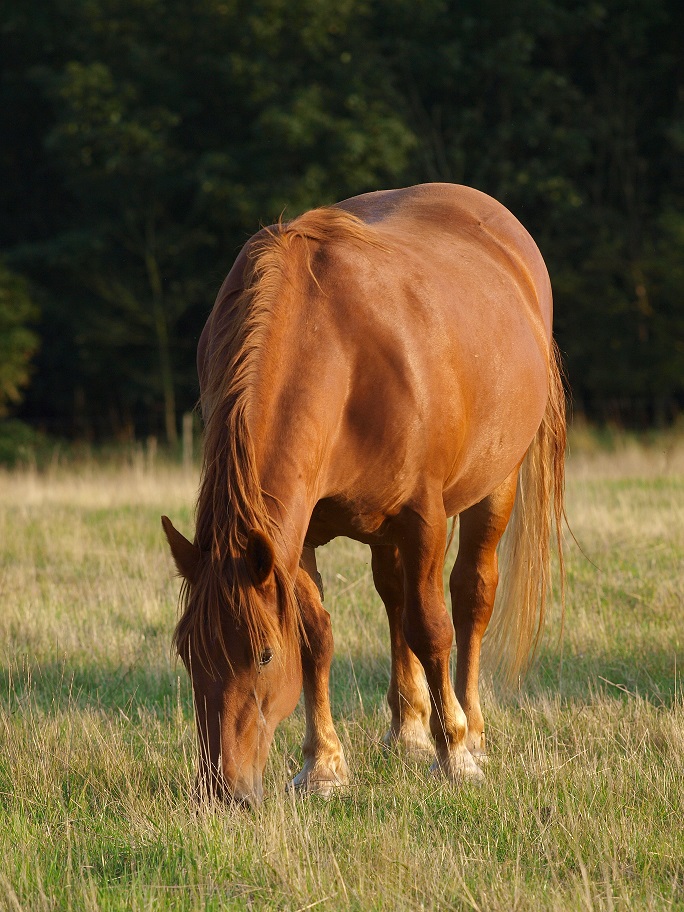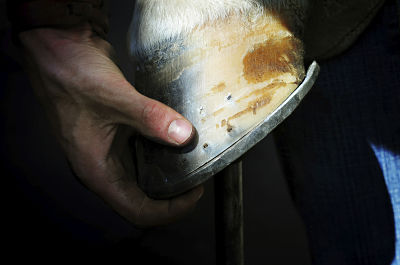How can Prolamin help my horse?
What is laminitis?
Laminitis is a disease with clinical signs including lameness, changes to the white line and hoof wall, a recognisable stance whereby the horse leans backwards to relieve weight on their toes, and in particular, obesity. The specific causes of this punishing disease are still not known for certain but following recent and developing research it is understood that most cases of laminitis are metabolic and a symptom of another systemic disease, most often an association with hormonal issues such as Equine Metabolic Syndrome (EMS) or Cushing’s disease (PPID). Other causes are believed to be trauma, such as exercising on hard ground; toxaemia from any systemic disease, overload laminitis typically caused by weight bearing on to a limb if the other is non-weight bearing; and stress. There are however, contributing factors to a laminitis diagnosis that can be managed to reduce the risk.

What is EMS?
A common endocrine disorder, equine metabolic syndrome (EMS) has become the medical term for metabolic abnormalities in horses and ponies, and often predisposes horses and ponies to laminitis. A pony with EMS produces insulin, but the cells in the body fail to take up enough glucose, resulting in the blood glucose levels staying high and the pony being at risk of laminitis.
Management
If the laminitis was caused by an endocrine or metabolic disorder, a long-term strategy will be necessary for the management of diet, weight, exercise, farriery and veterinary care. Investigations by your vet will be instrumental in helping to manage your horse’s diet and exercise routine to help reduce the chance of another bout.
Methods for managing the diet include feeding a low calorie, high fibre diet with restricted access to grass and balancing the diet with nutrient dense supplements. Of course, the horse needs to be consuming forage for approximately 16-18 hours of the day for digestive health, but soaking hay can be an effective way to reduce calories (more information on this method for weight loss can be found here). When accompanied with consistent exercise, weight can be effectively managed.
Laminitis caused by, for example, a one-off carbohydrate overload, toxaemia in a broodmare, or trauma to a supporting limb is typically more easily managed, as it’s a unique event. Whatever the cause, your vet is the best person to give the right advice to help determine the cause and decide on the best future management.
Further tips and advice on preventing and managing laminitis can be found here.

How can Prolamin help?
Prolamin is the ideal supplement for horses on a restricted diet that have been affected by laminitis or are at risk. It is formulated as a two-part supplement, the first being a broad-spectrum vitamin and mineral pellet, and the second is herbs, used to support circulation. These two parts complement each other to provide the horse with the correct nutrients for optimum hoof tissue health as well as growth and regeneration.
Hawthorn has been shown to have beneficial effects on the cardiovascular system, and buckwheat has proved useful for circulation, supporting blood supply to the hoof. Rosehips and nettle are both helpful for general health, as nettle is often used as a tonic and rosehips are a natural source of vitamin C.
To find out more about Prolamin, please click here.
